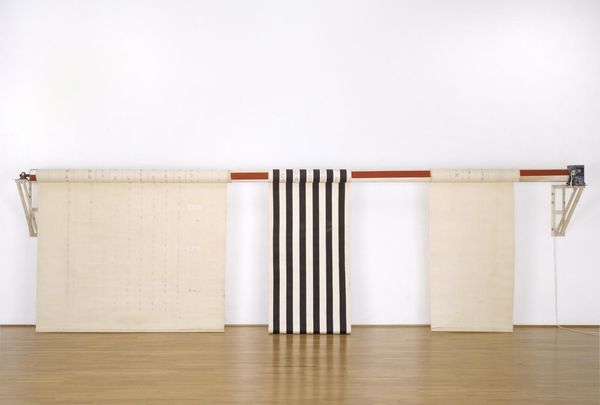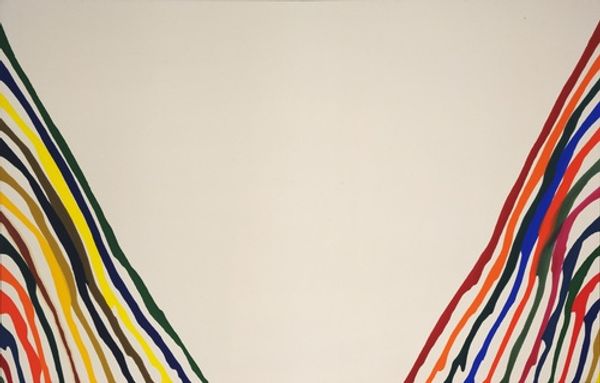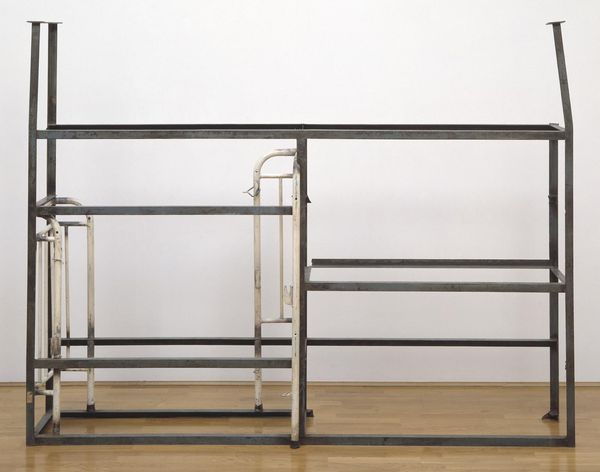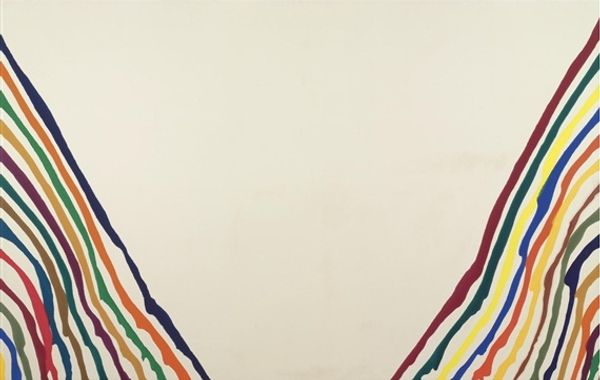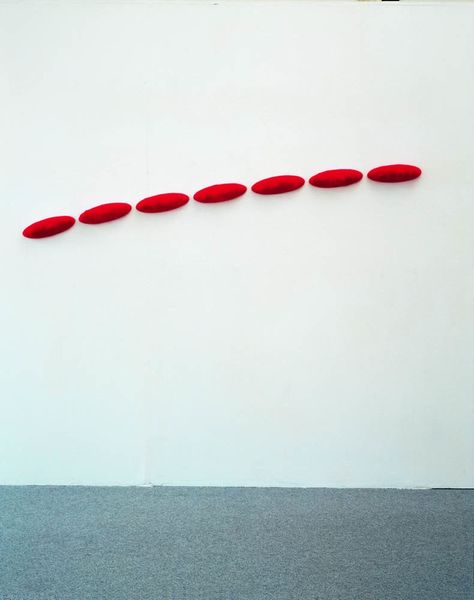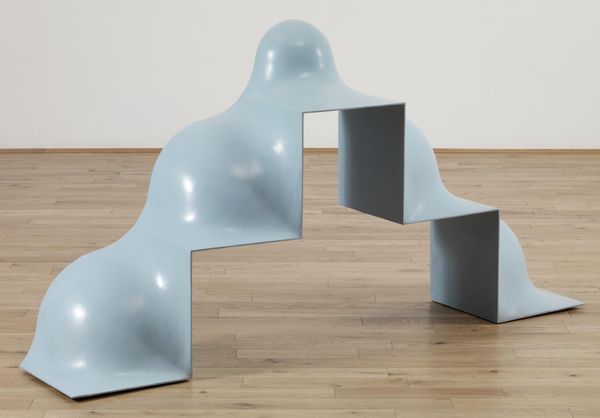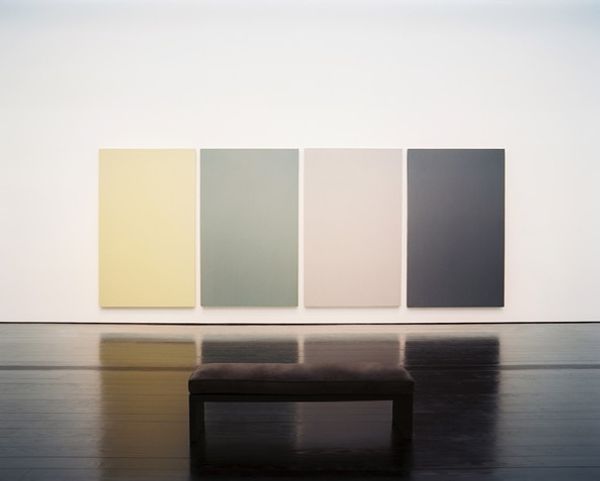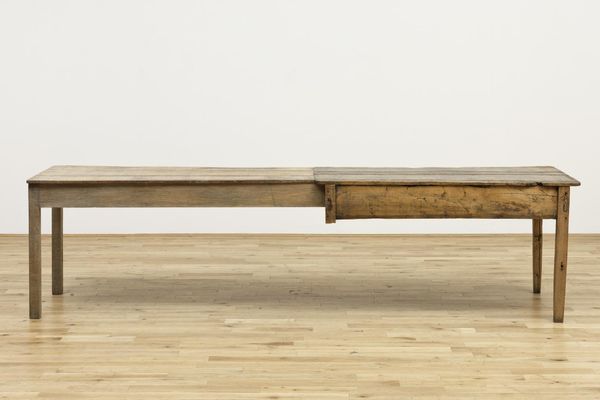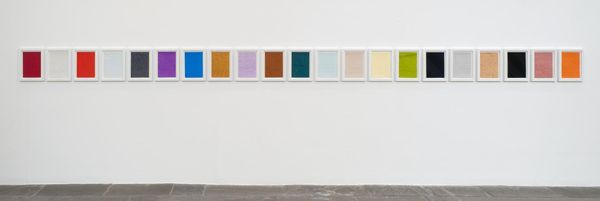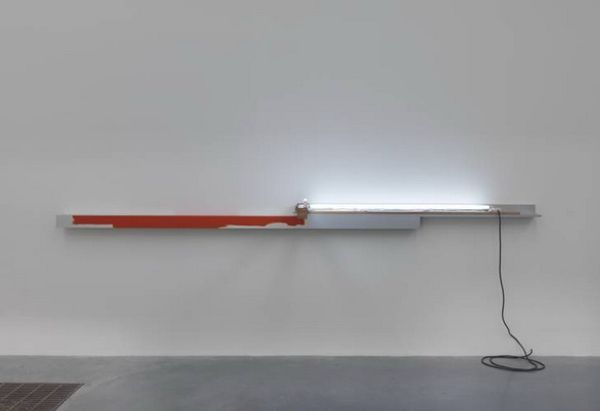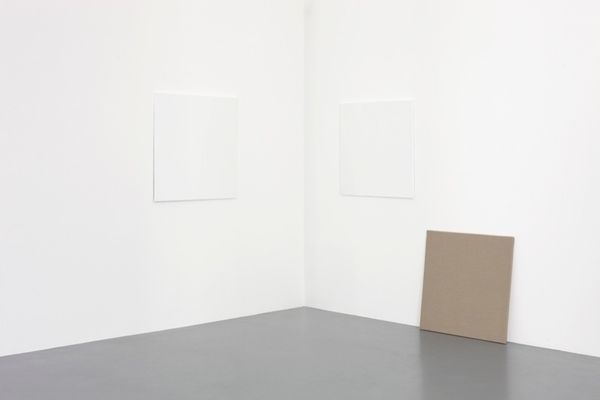
Dimensions: object, each: 820 x 1420 x 610 mm displayed: 820 x 4260 x 610 mm
Copyright: © Langlands and Bell | CC-BY-NC-ND 4.0 DEED, Photo: Tate
Curator: Langlands and Bell's "Adjoining Rooms," currently held in the Tate Collections, is a fascinating piece. What catches your eye first? Editor: Well, the stark primary colors juxtaposed with the cool, almost clinical, white framework feels immediately striking. It's a bold statement. Curator: Indeed. Each element, from the choice of materials to the precise construction, reflects a deliberate engagement with the means of production. I see a commentary on design and function. Editor: Absolutely, but I'm drawn to the socio-political implications. The ordered arrangement, the limited palette – is it a commentary on institutional power structures? Curator: That's a compelling interpretation, considering their wider body of work often engages with architectural and social spaces. Editor: It makes you think about the choices inherent in designing our world, and who gets to make those choices. Curator: It's a powerful thought, and seeing it all come together helps one understand the artists’ perspective more fully. Editor: Precisely, a piece that prompts a necessary dialogue.
Comments
tate 6 months ago
⋮
http://www.tate.org.uk/art/artworks/langlands-and-bell-adjoining-rooms-t12052
Join the conversation
Join millions of artists and users on Artera today and experience the ultimate creative platform.
tate 6 months ago
⋮
Adjoining Rooms 1989 is a sculpture made by the British artist duo Langlands & Bell (Ben Langlands and Nikki Bell, who began collaborating in 1978), comprising three thin rectangular wooden tables positioned end to end. Constructed by the artists and painted white, the tables each contain an empty display case with a glass top and four side panels composed of transparent coloured Perspex – with the panels of one case coloured blue, one case yellow and one case red. In a 2005 interview with Tate conservators, the artists stated that the order of the three tables is not fixed, although layout instructions inscribed on the bases of the tables suggest that the table with the red case should be placed in the centre. It is intended that the sculpture be positioned within an open space – and not against a gallery wall – so that visitors are able to walk around it in its entirety.
